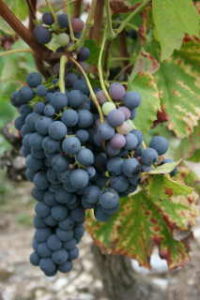- Wine Tour Destinations
Champagne is an extremely complex blended wine, made from a variety of grapes from different vineyards throughout the region. There are three main grape varieties when it comes to Champagne, Chardonnay, Pinot Noir and Meunier.
Even though Pinot Noir and Meunier are in fact red grapes, Champagne producers very delicately press the red grapes to extract the juice and then discard of the skins. It is very important that after harvest, the grapes are not left in contact with the skins for too long as you risk discolouring the juice. Champagne is one of the only regions to have mastered the technique of producing white wines from red grapes. The term for a Champagne that is made exclusively from red grapes is Blanc de Noirs and Champagne that is made from 100% Chardonnay is referred to as Blanc de Blancs.
Chardonnay
Colour
White
Principle Region
Côte des Blancs
Production
One of the most successful brut style grape varieties worldwide. It adapts to a great range of climates, soils and locations.
Ageing
Chardonnay grapes are slower to develop than other varieties and therefore Chardonnay wines are built to age.
Palate
The high levels of acidity provide a freshness, delicacy, elegance and finesse.
Fun Fact
Chardonnay is considered the ‘star performer’ in Champagne
Pinot Noir
Colour
Red
Principle Region
Montagne de Reims and the Côte des Bar
Production
The cool, chalky terrain in these areas, perfectly suit this grape variety
Ageing
Pinot Noir does not retain its freshness for as many decades as other grapes (notably Chardonnay) and therefore does not generally age very well. However, when aged (for example in Champagne) it does produce a more complex wine, with biscuity aromas
Palate
Pinot Noir gives backbone, structure and body to Champagne blends. Classic aromas and tastes are red fruits, such as cherry, raspberry and currants
Fun Fact
Pinot Noir is known as the heart-break grape, because it is notoriously hard to grow and produces a low yield. It also has a particularly thin skins, which means it is easily susceptible to disease and rot if the skin becomes damaged and breaks
Meunier
Colour
Red
Principle Region
Marne Valley
Production
Particularly valuable grape because it buds later in the spring than Pinot Noir and Chardonnay. It is therefore less prone to damaging frosts and can thrive in areas like the Marne Valley, an area where the other two varieties would not be successful.
Ageing
Meunier matures quicker than Pinot Noir and Chardonnay and therefore are not often used in blends that are to be aged.
Palate
This grape contributes fruitiness and floral aromas to the blend. Classic aromas and tastes are red fruit, such as cranberry, cherries and berries.
Fun Fact
Until very recently Meunier was referred to as Pinot Meunier. However, a report published by the CIVC (Comité Interprofessionnel du Vin de Champagne), established that its DNA was not related to that of the Pinot variety and should therefore, from now on, only be referred to as Meunier.
The Forgotten Four
Contrary to popular belief there are actually four other grape varieties that are permitted in the region and the Champagne making process. These are Arbanne, Petit Meslier, Pinot Blanc and Pinot Gris. However, together these grapes account for less than 0.3 per cent of plantings and whilst you are permitted to use these grapes in the Champagne blends, you are not allowed to plant new vines. These grapes are primarily found in the south of the region, in the Aube and are slowly dying breeds.

